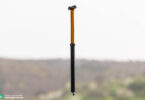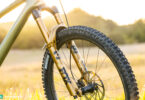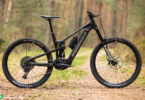The launch of the Shimano Steps MTB E8000 motor back in spring made quite a stir in the industry, raising expectations and throwing up a whole host of thus-far unanswerable questions: How does the motor ride? What have the Japanese company created now? Is it better than a Bosch motor? Well, the wait is over and we can exclusively give the first proper test review.

The technical brief on the Shimano Steps MTB E8000
After this article formally introduced the Shimano Steps MTB E8000 in all its 70 Nm technical glory, now it’s time for the first test report. The compact sizing of the motor casing is particularly conspicuous on the STEVENS plus-size hardtail, which goes a long way to simplifying the motor’s integration. It’s evident just how important this feature is when you consider how much work Cannondale invested in order to integrate the Bosch motor into their new Moterra. Like much of its competitor, the battery for the Steps motor has a 500 Wh capacity.
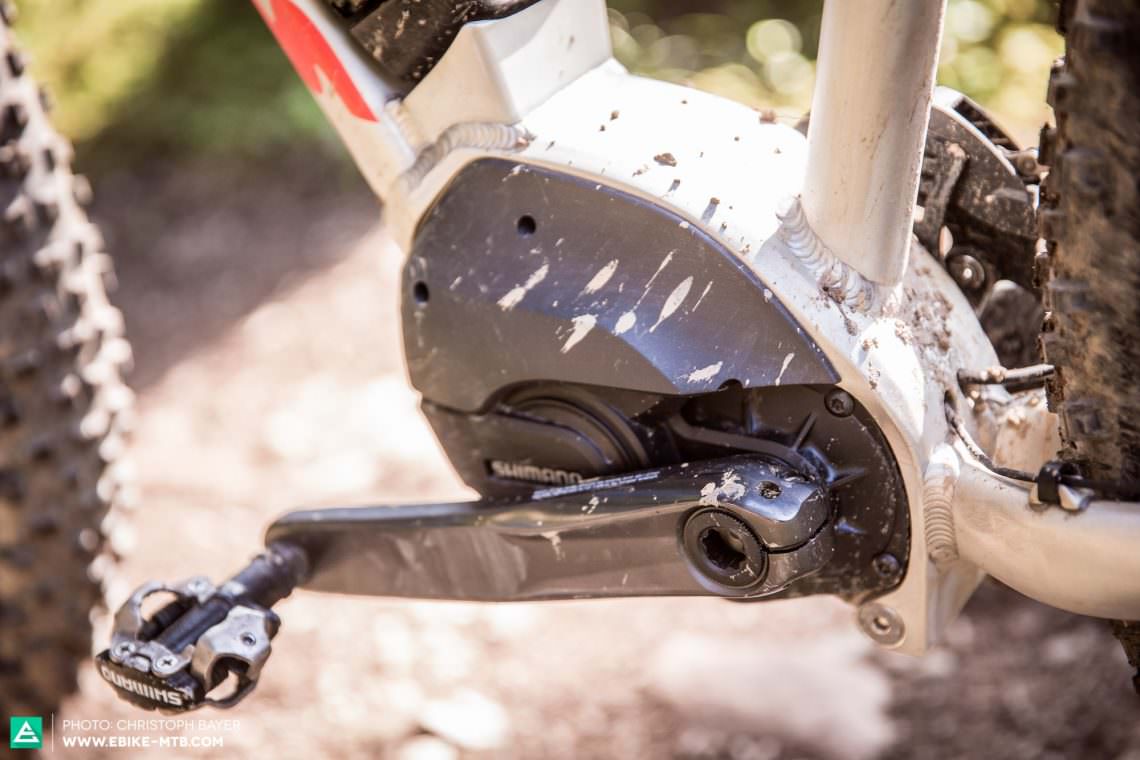
Using the Shimano Steps MTB E8000
In our First Look article we raved about how well they’d designed the computer and lever and we’re stoked to say that the reality confirmed our thoughts. Mounted on the left of the bars, the ‘gear lever’ shifts between the three levels of pedal-assist. It has little ridges on the lever, and outstanding ergonomics that comply with the natural movement of your digits. The shifting is rapid, intuitive and, above all, comfy.

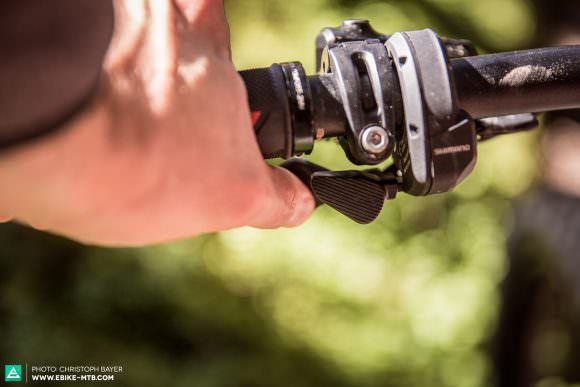
In terms of sizing, the computer is a bit bigger than the electronic Di2 groupset model. We rode through the woods where the light changed drastically under the canopy of trees, then we broke out in blaring sunshine – no matter what angle we viewed the computer, or in how much shade, the screen was really easy to read. This – along with the new ergonomic lever and protected position of the computer between the stem and the bars – is confirmation to us: Shimano may have just set a new standard for drive units. But will it perform to an equally high level?
First impressions of the Shimano Steps MTB E8000

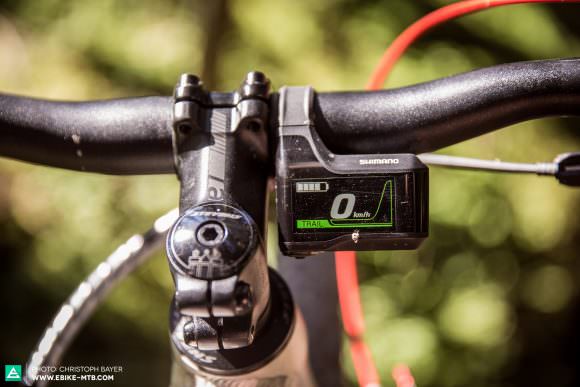
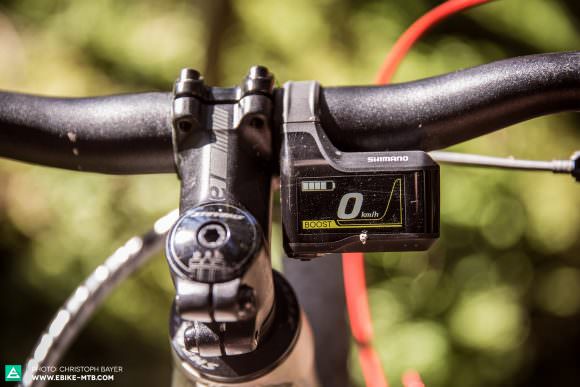
The first two modes – eco and trail – deliver fairly moderate support, much less than what’s dished up in the sport mode of a Bosch Performance CX. Then there’s the so-called boost mode, which most definitely lives up to its name. According to Shimano, boost is best suited for steep climbs and situations when you really need the maximum level of support. For them, trail and eco represent the two main modes. We’ve got to mention how the Shimano Steps MTB motor delivers an incredibly consistent power output, producing a great performance from low to high cadence – this alone renders it superior to the likes of Yamaha and Brose, as it’s exactly this aspect that constantly gives rise to complaint. Brose have shown themselves to be highly independent of cadence, and give the optimal support at a high frequency in particular. Yamaha, on the other hand, only really deliver full support when you’re pushing a pretty steady stroke cadence of around 75 strokes a minute. But back to Shimano…
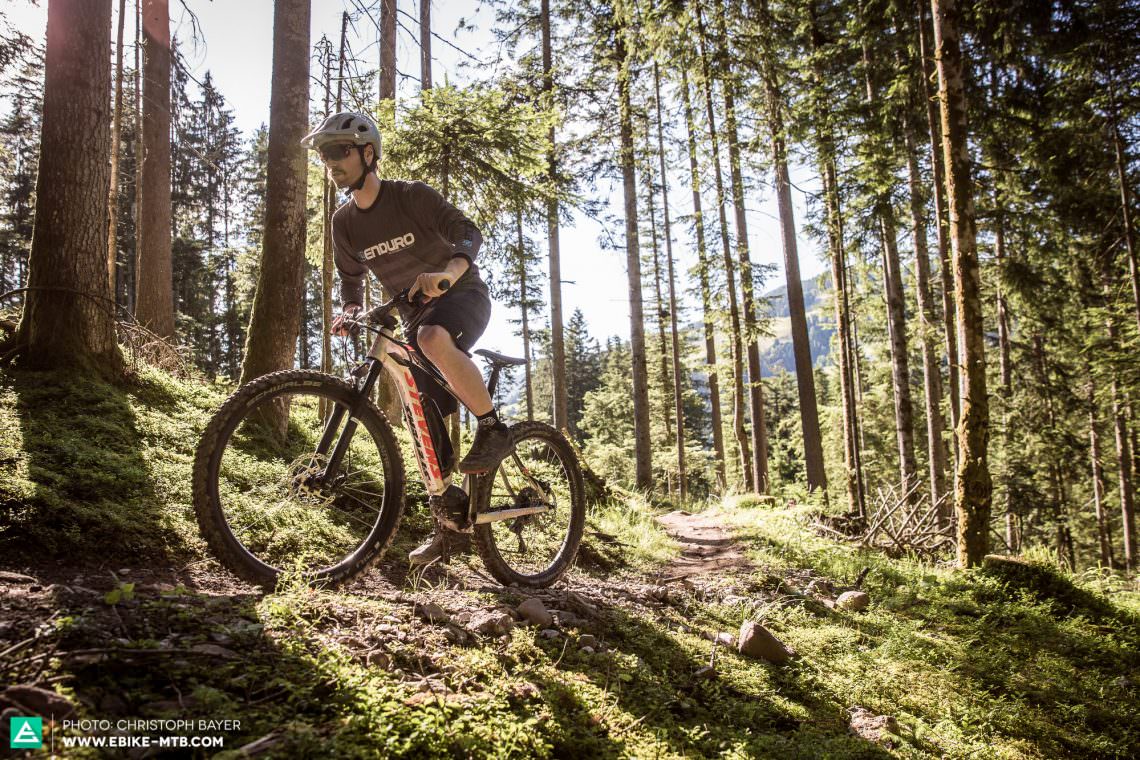
We’d really like to see another mode step in to the gulf between trail and boost, or perhaps even for Shimano to tighten the step between them. Seeing as the lever is so well designed and makes shifting between the modes so simple, you can imagine that purely theoretically speaking it’d be easy to set up the exact amount of pedal-assist. More gradations would lead to less battery usage, as you’d be able to set the desired levels of support and would therefore waste less energy.
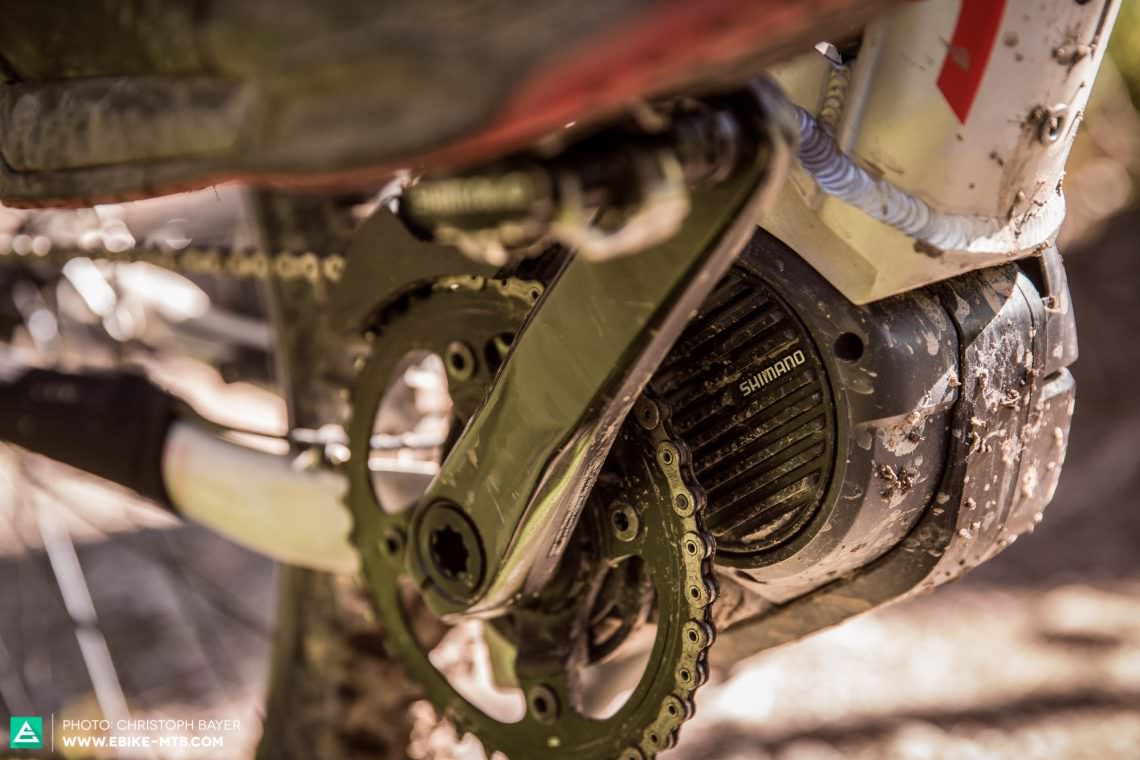
While the trail mode had a tendency to be too weak on mega steep climbs, the masses of power from the boost mode actually led to sporadic loss of traction. And it took a while to get used to the relatively slow lag.
We’re pinning our hopes on the E-Tube app, which is due out in July for iPads, in September for iPhones and from November for Android appliances. This should allow riders to individually tune their motor, much in the same vein as Specialized’s Mission Control app.
A look at the previous generations of Bosch motors and the virtually constant improvements that have been made is enough to suffice: there’s still a ton of potential in the software and tuning of the motors. Shimano have grabbed this potential and are running with it – not just going forward to series production, but in the future too. And it’s looking exciting! The connectivity and integration with the Di2 groupset opens up a wealth of opportunities!
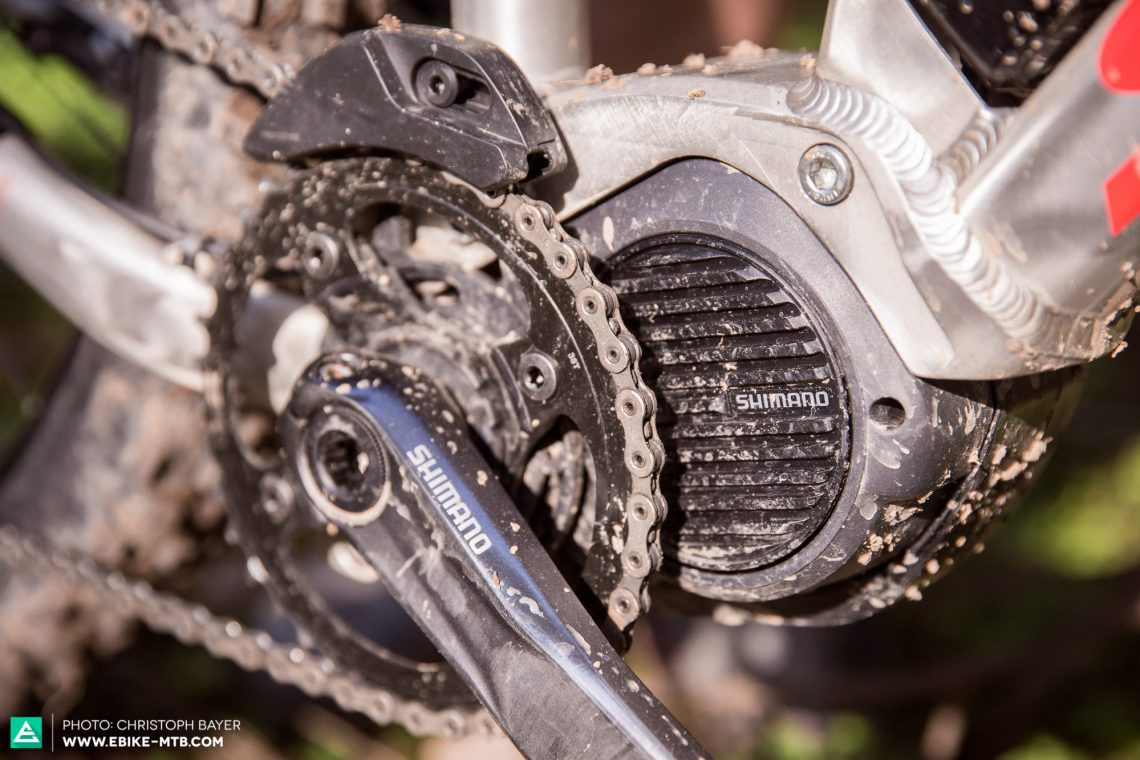
Conclusion: Shimano Steps MTB E8000
What’s better: Shimano or Bosch? In the soon-to-be-published E-MOUNTAINBIKE Issue #007, this is exactly the question we’re going to tackle head on. What we can reveal now is that Shimano have taken the lead when it comes to ergonomics and integration, but are still catching up when it comes to configuring the motor. For the purpose of mountain biking, Bosch do present some far better suited modes.
As yet not a single manufacturer has managed to come up with the perfect solution but there’s definite progress, with various approaches and concepts taking things in the right direction! With Shimano it’s particularly exciting to see where and how they’ll tune the configuration of the motor and the gearing components. After all, the motor is just one part of an E-MTB and a successful total concept needs special gearing components, frame integration, geometry and a spec that works – and only then will it determine whether the bike is fun to ride!
For a direct comparison between Bosch and Shimano drive units check out the upcoming E-MOUNTAINBIKE Issue #007.
Did you enjoy this article? If so, we would be stoked if you decide to support us with a monthly contribution. By becoming a supporter of E-MOUNTAINBIKE, you will help secure a sustainable future for high-quality cycling journalism. Click here to learn more.
Words: Robin Schmitt Photos: Christoph Bayer





